The mission of LayerZero Labs is to solve the interoperability issues between blockchains and provide dApp developers with the ability to send messages across multiple blockchains without the need for intermediaries.
By: Chain Teahouse
LayerZero is an interoperability protocol that immediately verifies cross-chain transactions using new technology to connect different blockchains, overcoming the challenges of fragmented liquidity. It aims to create pathways and platforms for communication between independent blockchain networks, enabling them to share assets, states, and liquidity.
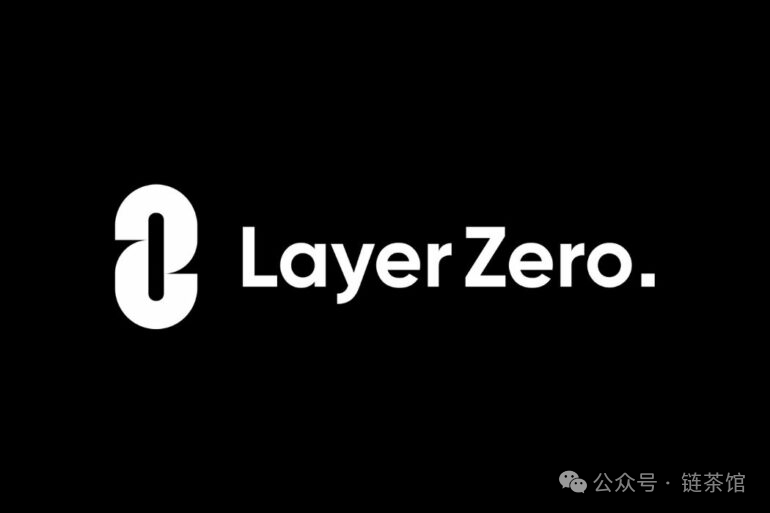
LayerZero was founded in 2021 by an engineering team led by Bryan Pellegrino (Co-founder and CEO), along with Caleb Banister (Co-founder), and Ryan Zarick (Co-founder and CTO).
At the time, due to many blockchains operating in isolation, users were forced to fragment their resources and liquidity, limiting their choices to transfer liquidity and states between closed ecosystems.
Therefore, LayerZero Labs' mission is to solve the interoperability issues between blockchains and provide dApp developers with the ability to send messages across multiple blockchains without the need for intermediaries. LayerZero adopts an innovative architecture, including super-light nodes, independent oracles, and relayers, to securely and efficiently transmit messages between chains.
Operation Principles
LayerZero uses a set of smart contracts called LayerZero endpoints on each supported chain. In addition to connecting all chains supported by LayerZero, they can also be deployed on new chains to integrate them into the network. Cross-chain lending is an example, where transaction details are sent from one blockchain (such as Ethereum) to a LayerZero endpoint on another chain (such as Avalanche), facilitated by independent off-chain entities, oracles, and relayers.
Specifically, the main components of the LayerZero protocol include:
Relayer: Responsible for sending transaction proofs and transaction data from Chain A to Chain B, while matching the block header hashes of Chain A and Chain B.
Oracle: Collaborates with decentralized oracles like Chainlink to provide reliable data transmission for the LayerZero network.
Endpoints: A set of smart contracts divided into communicator, validator, network, and library modules. The library module contains the code for each blockchain network, and when a new network needs to be added, only the library module needs to be updated. They are facilities that interact directly with users or applications, or can be seen as a series of smart contracts that handle logic. These endpoints are responsible for handling message transmission, validation, and reception. Their purpose is to ensure effective delivery when users send messages using the protocol.
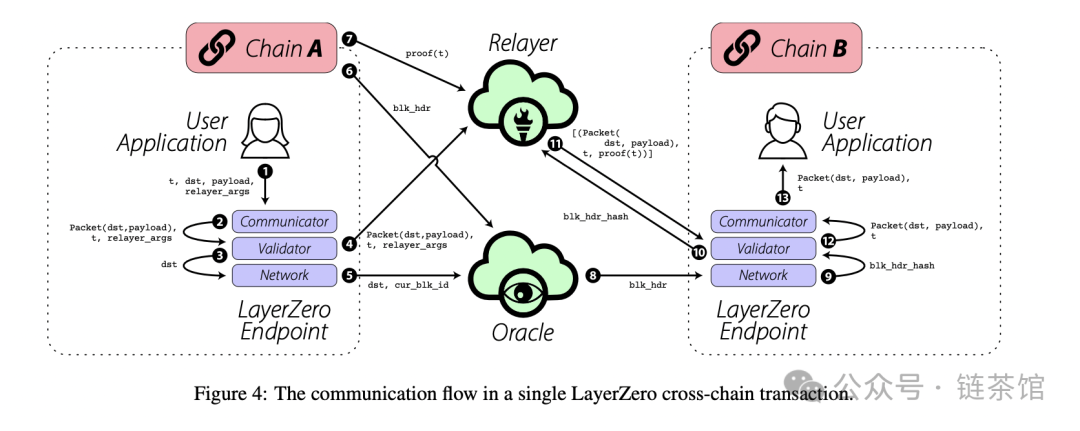
The message transmission process of LayerZero relies on two main entities: oracles and relayers. When a user agent (UA) sends a message from Chain A to Chain B, the message first passes through the endpoint on Chain A. Then, the endpoint notifies the designated oracle and relayer about the details of the message and its target chain. The oracle passes the block header to the endpoint on Chain B, while the relayer submits the transaction proof. After verifying this proof on the receiving chain, the message is forwarded to the final destination address.
The security of LayerZero is based on the idea that if two independent entities can confirm a transaction on one chain, then another chain can trust and execute that transaction. Upon receiving transaction details, the oracle creates a block header, and the relayer independently generates a proof. If both parties agree, the transaction is considered valid and completed on the second chain.
Features and Ecosystem Use Cases
Bridging
Bridging is currently the most popular interoperability solution. Cross-chain bridges allow asset holders to transfer assets between different Layer 1 and Layer 2 platforms. There are many reasons why investors bridge assets to another network, such as taking advantage of the fee structure on the target chain or benefiting from applications on the target chain. Bridging is more important than ever due to the availability of cheaper proof-of-stake (PoS) chains like Polygon, Fantom, and BNB Smart Chain (BSC). However, current bridging platforms have shortcomings in addition to the discussed security issues.
The capital intensity of running bridges lies in the need to develop new infrastructure for each bridging direction. For example, a bridging platform supporting 5 networks would require writing 5 different codes and running 5 intermediate chains or light nodes.
LayerZero claims to address this issue; first, the requirements for super-light nodes are low, and the universal data exchange means the same infrastructure and code can be used to create bridges for multiple networks. Such bridges are more efficient, more economical, and do not require different code sets to bridge different chains.
Aptos Bridge
Aptos was launched in October 2022, with the Aptos token (APT) as the native currency of the network. Aptos gained prominence primarily due to its unique technology and its connection to the failed Facebook project Diem, as the modified Move language used by Aptos was initially developed for the Diem blockchain.
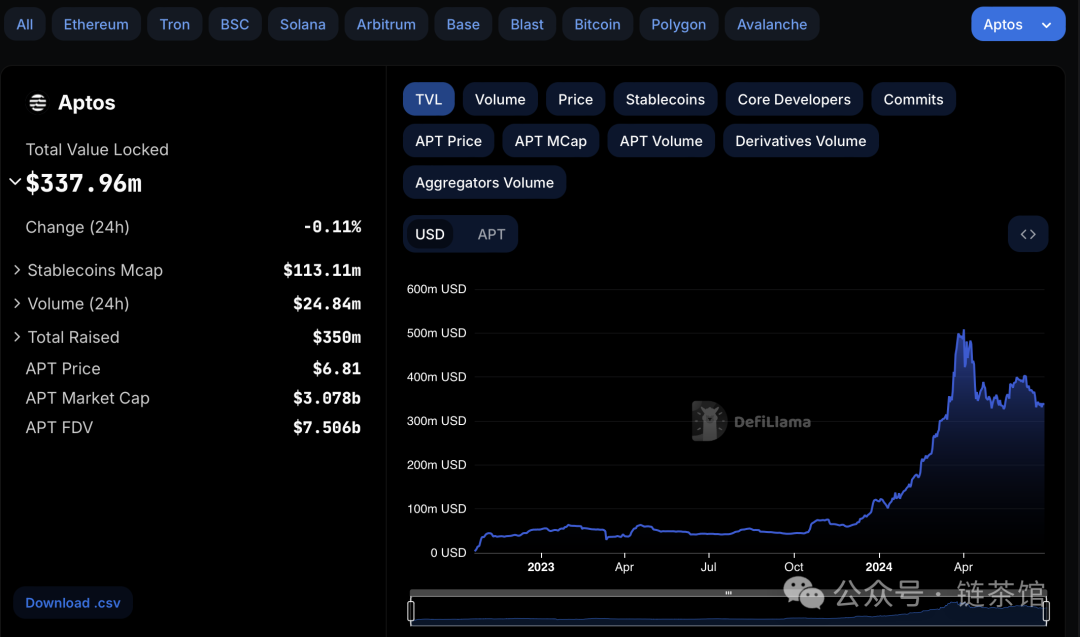
As of now, Aptos has a market value exceeding 3 billion USD, and the TVL on the network is reported to be 330 million USD in assets by DefiLlama, making its ecosystem significant. However, Aptos is not compatible with EVM, which is where LayerZero comes into play. The LayerZero Aptos bridge was launched shortly after the main network mined its genesis block, connecting Aptos to other EVM-compatible networks and even the Ethereum network.
Through the Aptos bridge, users can bridge Aptos-supported assets to other networks such as Binance Smart Chain (BSC), Avalanche, Polygon, Ethereum, and Ethereum Layer 2 networks like Optimism and Arbitrum. According to the platform information, the bridging process is expected to take 2-5 days.
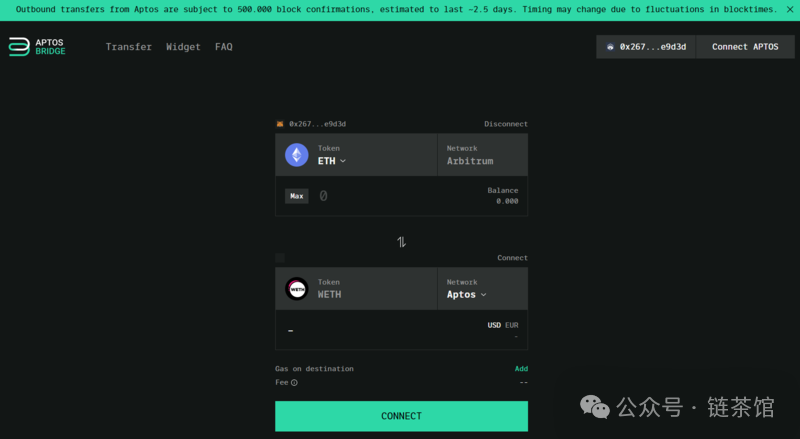
Stargate Finance (STG)
Stargate is a bridging platform developed using LayerZero interoperability technology. Stargate enables blockchain enthusiasts to transfer assets across chains in their native form and ensures finality.
This is achieved through Stargate using a unified pool system to process transfer requests across supported chains. Liquidity providers stake their assets in a single asset pool at Stargate and receive staking rewards in the form of stablecoins, which come from the fees paid by users to bridge assets on the platform.
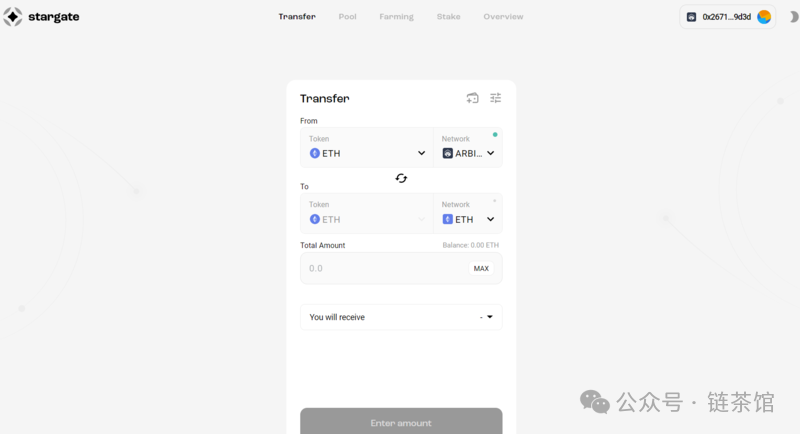
The bridge currently supports approximately 8 networks, including Layer 2 scaling solutions such as Arbitrum and Optimism. The full-chain technology provides a layer for supported tokens, enabling them to seamlessly operate and move across other chains. Stargate Finance also offers cross-chain swaps, allowing users to send assets from the source network and receive another asset on the target chain.
Data on the project page shows that assets worth over 200 million USD are locked on the platform. This reflects the liquidity of the pools that serve bridge requests. The Stargate token (STG) is the native token of the Stargate ecosystem, used for rewards and governance purposes. Liquidity providers can stake their LP tokens and earn additional rewards in STG tokens.
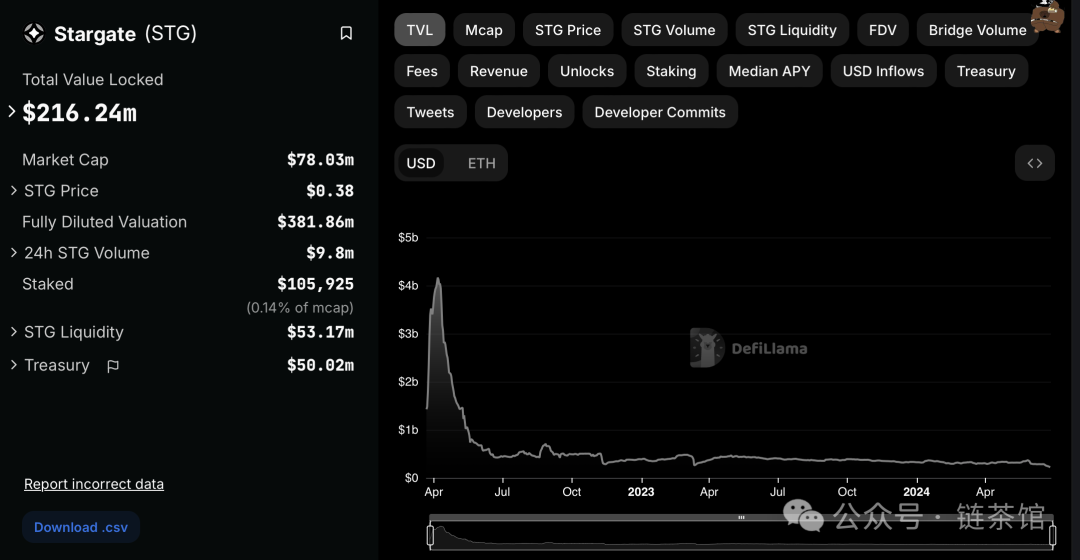
To contribute to project governance, STG holders must stake their tokens on the governance portal to receive VeSTG, which is used for voting on improvement proposals. STG is actively traded on centralized and decentralized exchanges. You can click here to view active trading pairs for the STG token.
Cross-Chain Swaps and Unified Liquidity
Investors looking to purchase crypto assets on different networks first need to bridge unified assets to the target chain and then use decentralized exchanges on the target chain for purchases. LayerZero's testnet bridge can directly exchange Ethereum and Layer 2 solutions like Arbitrum and Optimism for Goerli ETH from the mainnet. Similar systems can be developed on a larger scale to support cross-chain swaps, eliminating the process of bridging and connecting to exchanges on the target platform.
Current bridges use separate liquidity pools, for example, different liquidity pools serve bridge requests from Ethereum to Polygon PoS chain and from Fantom's Opera chain to Polygon. This may lead to efficiency disparities. The liquidity on the Ethereum to Polygon bridge may be sufficient to handle all requests, while the assets from both chains on the Fantom to Polygon bridge may not be enough to immediately fulfill bridge requests.
LayerZero's co-founder Ryan Zarick mentioned that LayerZero can utilize a unified liquidity pool to fulfill bridge requests from multiple target chains.
LayerZero achieves the ultimate goal of bridging: achieving unified liquidity across all chains and ensuring finality on the source chain. This means that when a user transfers assets from Chain A to Chain B, the user can be assured of the assets on Chain B, and LP providers can earn fees from all incoming transactions on Chain B, regardless of the source chain.
Base
Base is an Ethereum Layer 2 solution launched by Coinbase, using Optimism's OP Stack software. Base provides a simple integration path for decentralized applications, ensuring the security, stability, and scalability of decentralized applications, while also providing a convenient channel for users and assets from Ethereum L1, Coinbase, and other interoperable chains.
The LayerZero protocol is live on Coinbase's Base mainnet, facilitating cross-chain communication through full-chain interoperability solutions, including token exchanges, transfers, and other functions, improving the overall efficiency and accessibility of the decentralized ecosystem.
The practical applications released through the collaboration of LayerZero and Base are numerous. For example, the Parallel project has successfully moved tokens between Base and Ethereum using the LayerZero protocol, demonstrating the practicality and efficiency of the protocol.
SushiSwap
SushiSwap is a multi-chain decentralized exchange supported by AMM. It claims to have over 400 crypto assets available for instant decentralized exchange. The liquidity pool locks over 200 million USD worth of crypto assets. These statistics are from the project's official website and are valid at the time of writing. Its governance and reward system is powered by the SUSHI token.
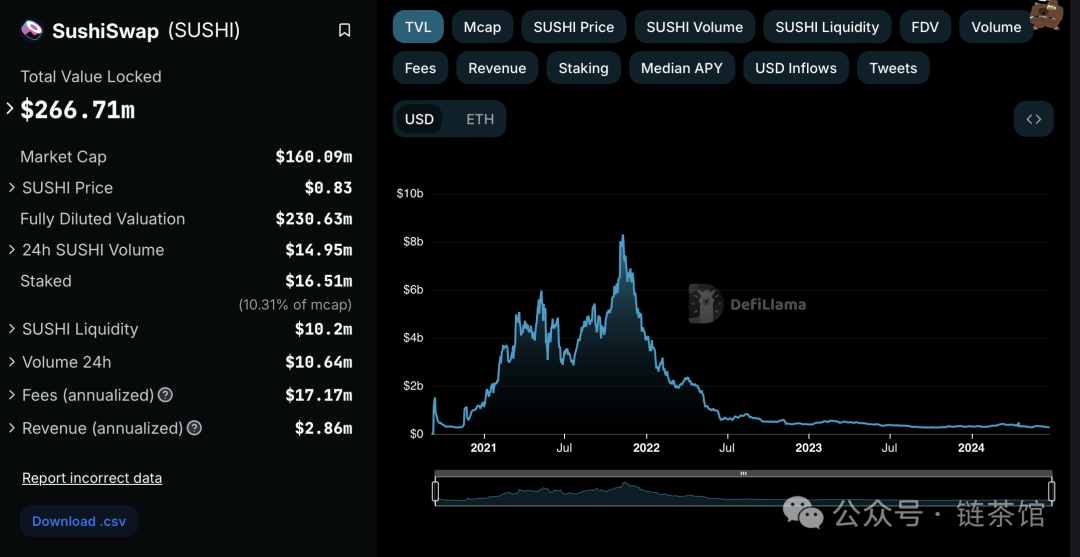
In July 2022, SushiSwap announced the launch of SushiXSwap. The new platform is developed using LayerZero's interoperability technology to address pain points in multi-chain DeFi applications. In the announcement, SushiSwap reflected on the major issues affecting cross-chain interaction facilities and how to deploy LayerZero's technology to address this. At launch, SushiXSwap supports asset bridging across Ethereum, Fantom, and approximately 5 other networks.
LayerZero's technology enables SushiSwap to develop a unified liquidity system that aggregates resources from supported networks to facilitate asset transfers and ensure these transactions are completed in the shortest time possible. As an existing liquidity pool project, SushiSwap leverages its liquidity pools to power bridges between the networks where the project is located, addressing the issue of dispersed liquidity.
SushiSwap also addresses the fee structure of asset bridges by providing users with the cheapest cross-chain transfer routes. This cost-effective solution leverages Stargate Finance's bridging infrastructure to find the cheapest route for transferring assets from the source chain to the target chain. SushiXSwap will also use Stargate's facilities to expand its bridging and extend to other networks over time. Cross-chain swaps are also available on SushiXSwap.
Full-Chain Tokens and NFTs
By design, LayerZero's technology creates a true layer zero: an ecosystem that can interact with any other network, share resources, and operate freely without platform restrictions—full-chain. LayerZero can be the first to introduce "non-native" crypto assets. Non-native means they can be used on each chain without the need to port them through bridges in their original form to the target chain and back. Full-chain tokens and NFTs will be unique and can enjoy faster adoption rates, as investors can easily purchase and store them on their preferred blockchains.
TofuNFT
TofuNFT is a multi-chain NFT marketplace deployed on over 20 blockchain networks. NFT enthusiasts can list their NFTs on supported networks and sell them on TofuNFT's marketplace, as well as collect works from other NFT creators. TofuNFT is integrated into the LayerZero ecosystem for the development of a full-chain NFT market.
Full-chain NFTs, like full-chain fungible tokens (OFT), are non-native NFTs that can be easily transferred across different networks in their original form. TofuNFT's full-chain marketplace has received a small number of full-chain NFT listings, such as LayerZero punks with a floor price of 0.015 ETH at the time of writing.
Oasys
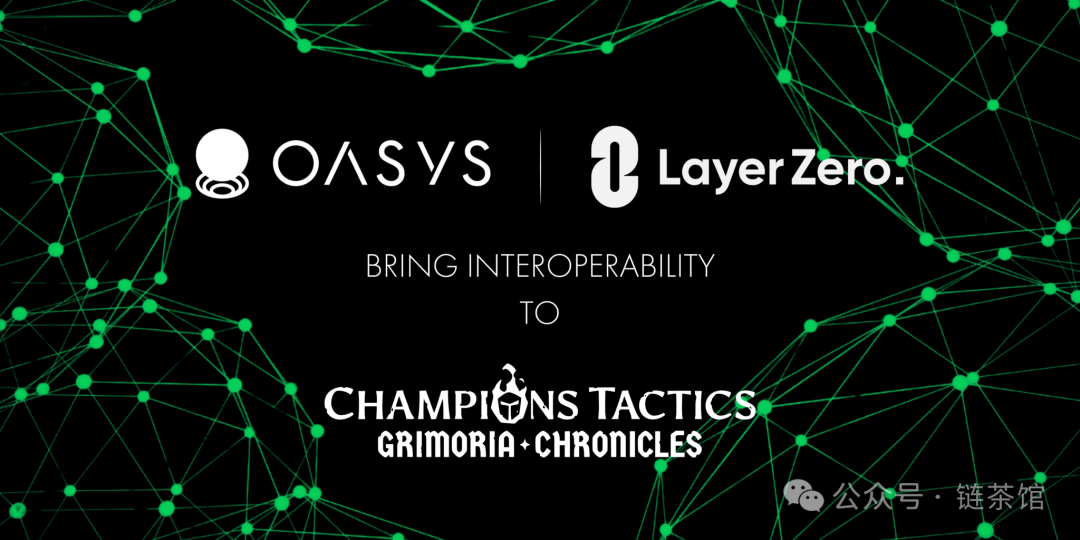
Oasys is a blockchain optimized for gaming, providing highly scalable Layer 1 hub and dedicated Layer 2 using Ethereum's Layer 2 scaling solution. The ecosystem offers secure and scalable blockchain infrastructure for game developers to create more efficient, secure, and interoperable games.
Oasys validators include leaders in the gaming and Web3 fields, such as SEGA, Ubisoft, and Yield Guild Games, who are the initial validators of our PoS-based blockchain. Oasys's professional blockchain team combined with well-known figures in the gaming industry is fundamentally changing the gaming industry.
Oasys is dedicated to creating an ecosystem for game players and developers, addressing the challenges faced by game developers in building blockchain-based games. The company's triple approach includes a fast network supported by the gaming community, a scalable network supported by AAA game developers, and a blockchain that provides the best user experience through fast transactions and zero gas fees. This approach prepares participants to enter Oasys and play games.
After integrating with LayerZero, Oasys will utilize LayerZero's interoperability technology to enhance cross-chain operations for games and NFTs, providing a richer and more inclusive gaming experience. LayerZero also facilitates the flow of fungible tokens through the Omnichain Fungible Token (OFT) standard. Bryan Pellegrino, Co-founder and CEO of LayerZero Labs, added, "LayerZero's addition of endpoints to Oasys is a significant leap in in-game asset interoperability. LayerZero is committed to connecting communities and enhancing players' ability to access and enjoy games they love across different networks."
Overall, LayerZero is primarily used by decentralized application developers who need to communicate across multiple blockchain networks. The LayerZero ecosystem also includes projects in various categories, covering NFTs, payments, wallets, bridging, infrastructure, DeFi, DEX, GameFi, and more, making the ecosystem quite prosperous.
ZRO Token
The $ZRO token is the primary token in the LayerZero ecosystem, used to facilitate various activities and incentive mechanisms within the ecosystem.
The $ZRO token plays multiple roles in the LayerZero ecosystem, including:
- Incentives and rewards: Used to reward participants and contributors in the ecosystem.
- Governance: Users holding $ZRO tokens can participate in protocol governance decisions.
- Payments and transactions: Used for cross-chain operations and other transaction fees within the ecosystem.
The initial allocation of $ZRO tokens is as follows:
- Ecosystem Fund: 25% (2500)
- Airdrop: 19% (1900), with 5% allocated for IDO
- Core Contributors: 19% (1900)
- Investors: 17% (1700)
- RPGF (Retroactive Public Goods Funding): 20% (2000)
The circulating supply of $ZRO tokens is 110,000,000 ZRO, the total supply is 1,000,000,000 ZRO, and the maximum supply is 1,000,000,000 ZRO.
The release schedule for $ZRO tokens is shown in the following chart:
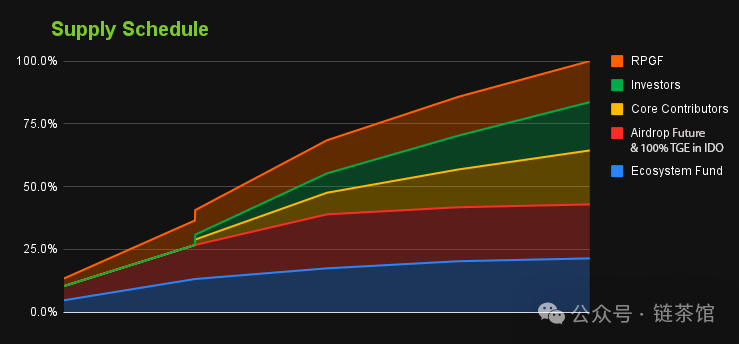
Team / Funding
Bryan Pellegrino, Co-founder and CEO of LayerZero Labs, graduated from the University of New Hampshire with a degree in Computer Science. He has served as a resident entrepreneur, chief engineer of machine learning architecture, and co-founder of OpenToken.
Co-founder Caleb Banister specializes in writing and auditing smart contracts for blockchain-related projects. Caleb is a professional Solidity developer with a Bachelor's degree in Computer Science from the University of New Hampshire. He is a technically proficient Java and Linux programmer, building the future and multi-chain metaverse.
Another co-founder, Ryan Zarick, is the Chief Technology Officer of LayerZero Labs. He is an experienced software developer and entrepreneur with over 10 years of experience in the tech industry. He co-founded Minimal AI, Coder Den, and 80Trill, and served as the Chief Technology Officer at Buzzdraft. He holds a Master's degree in Computer Science from the University of New Hampshire.
Since its inception, LayerZero has successfully completed multiple rounds of funding, with a total funding amount of 263 million USD and a market valuation of 30 billion USD.
In the recent Series B funding round, LayerZero successfully raised 120 million USD on April 4, 2023, bringing its valuation to 30 billion USD. This funding round attracted participation from well-known investors, including Andreessen Horowitz (a16z), Sequoia Capital, and Circle.
Previously, LayerZero also completed a Series A1 funding round on March 30, 2022, raising 135 million USD at a valuation of 1 billion USD. The main investors in this round included Andreessen Horowitz (a16z) and Sequoia Capital, demonstrating confidence in LayerZero's technology and development.
In an earlier funding round on September 16, 2021, LayerZero raised 6 million USD at a valuation of 50 million USD. With this early funding support, LayerZero laid the foundation for its development in the field of blockchain interoperability.
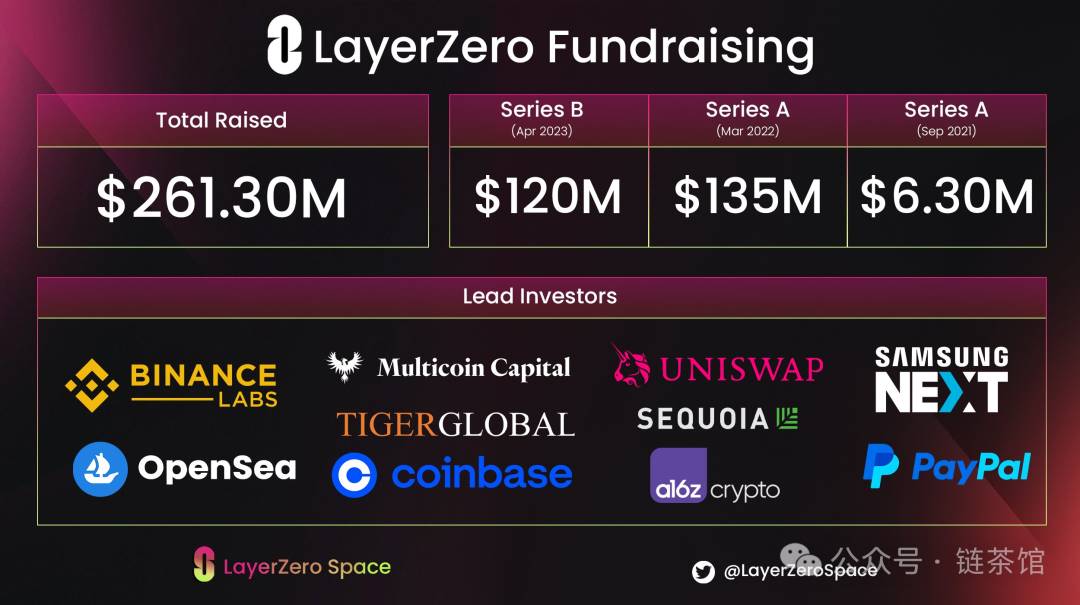
Project Evaluation
LayerZero belongs to the cross-chain interoperability track in blockchain technology. The goal of this field is to address communication and asset transfer issues between different blockchain networks, enhancing the interconnectivity of blockchain ecosystems.
Similar cross-chain interoperability projects to LayerZero include Wormhole.
Created by Jump Crypto, Wormhole is a decentralized cross-chain protocol designed to achieve data and token transfer between different blockchains through a universal messaging protocol. Supported blockchains include Ethereum, Solana, Sui, Injective, and others.
Wormhole consists of 17 highly validated Guardian nodes, which must confirm each transaction to ensure system security. It also supports cross-chain token and NFT transfers, has processed over 1 billion cross-chain messages, and interoperates with the messaging systems of Cosmos and Polkadot. Additionally, Wormhole supports the transfer of NFT assets between multiple blockchain networks.
Wormhole can be considered the most mature protocol in the track and is the only protocol unconditionally approved for use by Uniswap. It claims to have processed over 1 billion cross-chain messages and can interoperate with the messaging systems of Cosmos and Polkadot. While Wormhole's valuation may be lower than LayerZero's, it has the most adopted protocol and seems to have strong momentum that is unlikely to change soon.
However, LayerZero and Wormhole still have differences. Wormhole mainly relies on a fixed network of Guardian nodes, which limits flexibility. In contrast, LayerZero can freely choose oracles and relayers, increasing the system's flexibility and modularity. Wormhole adopts a trust-dependent technical solution (wrapped assets are held on the bridge chain and controlled by multi-signature accounts), while LayerZero uses light nodes to operate on the target chain, which can bundle and send all transactions at once, directly transferring native assets between chains, avoiding the complexity and risks of asset transfers between different chains.
In 2022, Wormhole was exploited by hackers, resulting in a loss of 120,000 ETH (approximately 325 million USD). However, its security has significantly improved since then, while LayerZero's cross-chain system has not been successfully attacked by hackers.
In addition to security, LayerZero has several advantages:
- Scalability: LayerZero is designed with scalability in mind, capable of handling high transaction volumes without affecting performance, making it suitable for large-scale applications and enterprise integration.
- Developer-friendly: It provides a powerful set of tools and APIs, making it easy for developers to build and deploy cross-chain applications.
- Cost-effectiveness: Through LayerZero's architecture, users can achieve cross-chain functionality without incurring high costs.
- Ecosystem support: LayerZero has received widespread support from the blockchain community and industry stakeholders, forming a vibrant ecosystem of developers, users, and partners.
While LayerZero's design is scalable, it may sacrifice performance when handling extremely high transaction volumes or complex cross-chain operations. Ensuring optimal performance under all conditions remains a challenge that the protocol must continually address. Additionally, LayerZero's security model relies on external validators, such as oracles and relayers. While this enhances decentralization and security, it also introduces potential single points of failure if these validators are compromised. Ensuring the reliability and trustworthiness of these external entities is crucial for the protocol's long-term viability.
However, as LayerZero is still in the early stages of the project and has recently launched its token, it still has future development potential. As long as its solution continues to work as claimed, with more projects adopting comprehensive interoperability solutions, the LayerZero ecosystem is expected to grow larger.
免责声明:本文章仅代表作者个人观点,不代表本平台的立场和观点。本文章仅供信息分享,不构成对任何人的任何投资建议。用户与作者之间的任何争议,与本平台无关。如网页中刊载的文章或图片涉及侵权,请提供相关的权利证明和身份证明发送邮件到support@aicoin.com,本平台相关工作人员将会进行核查。




